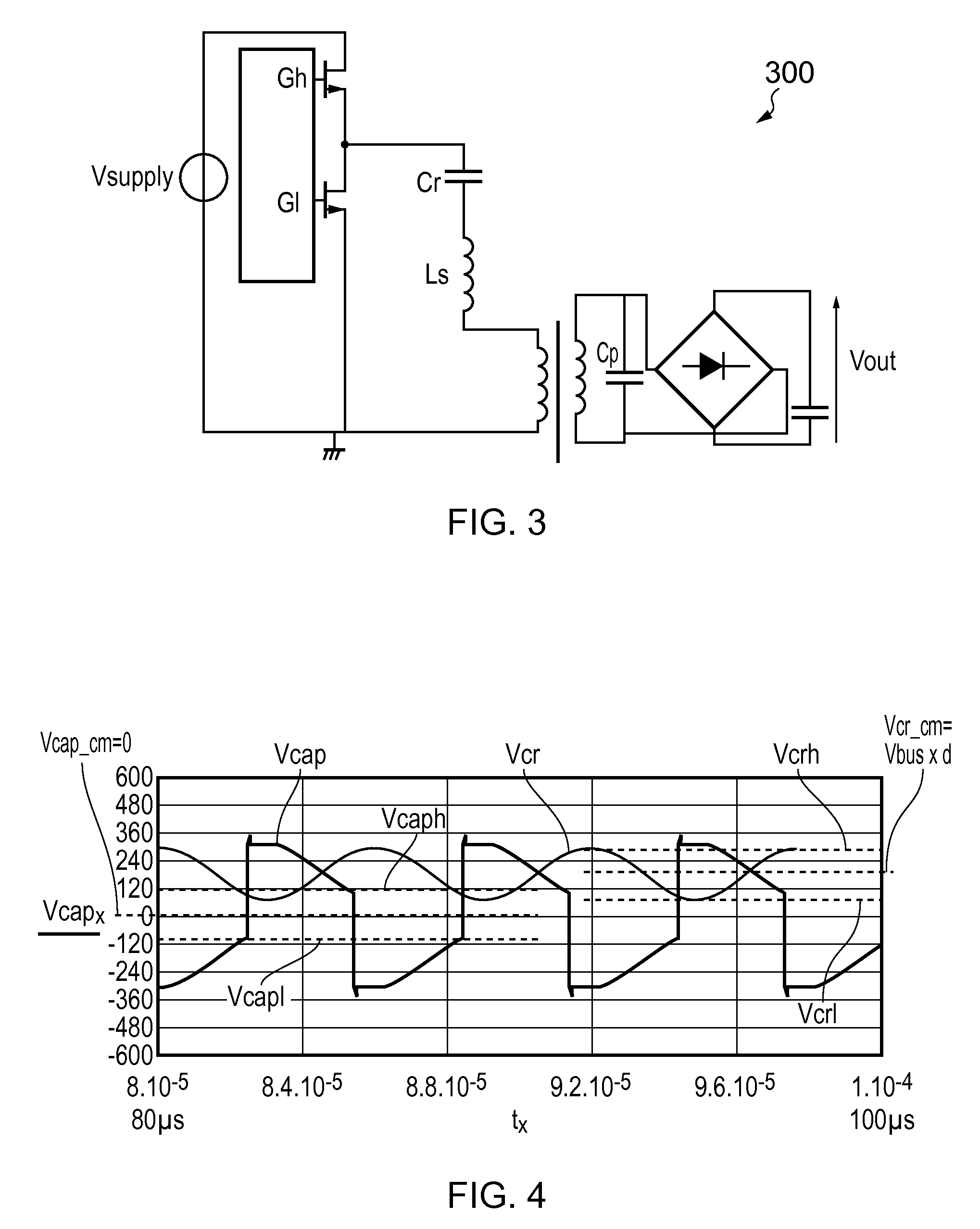Resonant converter control based on a voltage difference
a technology of resonance converter and voltage difference, applied in the direction of electric variable regulation, process and machine control, instruments, etc., can solve the problems of reducing efficiency at low load, drawback of relatively large circulating current, and insufficient stored energy in the magnetizing inductance to provide soft switching, etc., to achieve the effect of simplifying the circui
- Summary
- Abstract
- Description
- Claims
- Application Information
AI Technical Summary
Benefits of technology
Problems solved by technology
Method used
Image
Examples
Embodiment Construction
[0068]For control of the mode of operation of a resonant converter, an optimum timing of how the switches are operated needs to be determined. This can be an iterative process that requires a practical solution. One possible method can be illustrated using a so-called state plane representation, in which the voltage across a resonant capacitor is plotted against the current in the resonant tank. Using state plane representations, methods can be derived for controlling the resonant converter. One such method is capacitor voltage control, which involves controlling the way in which the switches are operated dependent on a sensed voltage across a capacitor forming part of the resonance circuit. According to this method, a voltage across the resonant capacitor is used to determine the timing for the switches that control the voltage across the resonant tank. Another method, optimum trajectory control, may be used in which the state plane trajectory, i.e. the relation between the capacit...
PUM
 Login to View More
Login to View More Abstract
Description
Claims
Application Information
 Login to View More
Login to View More - R&D
- Intellectual Property
- Life Sciences
- Materials
- Tech Scout
- Unparalleled Data Quality
- Higher Quality Content
- 60% Fewer Hallucinations
Browse by: Latest US Patents, China's latest patents, Technical Efficacy Thesaurus, Application Domain, Technology Topic, Popular Technical Reports.
© 2025 PatSnap. All rights reserved.Legal|Privacy policy|Modern Slavery Act Transparency Statement|Sitemap|About US| Contact US: help@patsnap.com



